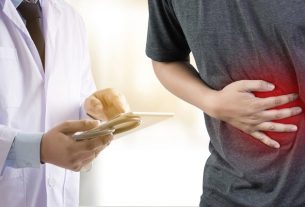HIV PEP or Post-Exposure Prophylaxis to the HIV virus is a treatment that helps prevent the multiplication of the HIV virus and the emergence of infection after risky behavior, such as sexual intercourse without a condom (condom), and is also indicated in cases of sexual violence and accidents with sharps, in some cases.
PEP corresponds to a combination of antiretroviral medications capable of inhibiting the multiplication of the virus and its entry into cells, and should only be used with medical advice. The treatment lasts 28 days and is provided free of charge by the Unified Health System (SUS).
The use of PEP is only indicated in specific situations and should not be used routinely to prevent HIV infection after risk situations. This is because the effects related to the continuous and regular use of the combination of these medications in HIV-negative people are not yet known. Therefore, it is important that a condom is used in all sexual relations.

What is it for
PEP serves to prevent the HIV virus from multiplying in the body, entering cells and developing AIDS. However, for this to be possible, it is essential that PEP is started within 72 hours of alleged exposure to the virus, preferably within the first two hours.
How PEP HIV works
PEP HIV consists of a combination of three antiretroviral medications, Tenofovir (TDF), Lamivudine (3TC) and Dolutegravir (DTG), which act by preventing the HIV virus from entering cells and multiplying and spreading throughout the body, preventing the development of AIDS. .
However, for it to work, PEP must be done for 28 days or as directed by your doctor.
It is important that the treatment is carried out until the end, because if there has actually been exposure to HIV, it is possible to guarantee the neutralization of all viral particles and, thus, prevent the development of the disease.
During PEP, it is also important that the person is properly monitored by the healthcare team to check the effectiveness of the treatment and the occurrence of adverse effects, and periodic testing for HIV is also recommended.
When to take
The use of PEP is indicated in cases where there has been risky behavior, that is, sexual intercourse without a condom or accidents with needles or other sharp materials, which is more common in healthcare professionals who work directly with blood samples.
Furthermore, this combination of medications is also indicated in cases of sexual violence and in cases where, despite sexual intercourse taking place with a condom, it was broken or removed.
Difference between PEP and PrEP
Both PEP and PrEP are a set of antiretroviral medications that work by preventing the virus from multiplying and developing the disease. However, PEP is used after exposure to the virus, while PrEP is indicated before exposure. Learn more about PrEP.
Bibliography
- MINISTRY OF HEALTH. PEP (HIV Post-Exposure Prophylaxis). Available at: <http://www.aids.gov.br/pt-br/pep-profilaxia-pos-exposicao-ao-hiv-0>. Accessed on 27 Dec 2021
- LIFE INCENTIVE GROUP. What is PEP?. Available at: <http://www.giv.org.br/HIV-e-AIDS/PEP-Profilaxia-P%C3%B3s-Exposi%C3%A7%C3%A3o/index.html>. Accessed on 27 Dec 2021
- MINISTRY OF HEALTH. Clinical protocol and therapeutic guidelines for PEP Post-Exposure Prophylaxis of risk of HIV infection, STI and viral hepatitis. 2021. Available at: <http://www.aids.gov.br/pt-br/pub/2021/protocolo-clinico-e-diretrizes-terapeuticas-para-profilaxia-pos-exposicao-pep-de-risco> . Accessed on 27 Dec 2021

Sign up for our newsletter and stay up to date with exclusive news
that can transform your routine!
Warning: Undefined array key "title" in /home/storelat/public_html/wp-content/plugins/link-whisper-premium/templates/frontend/related-posts.php on line 12
Warning: Undefined array key "title_tag" in /home/storelat/public_html/wp-content/plugins/link-whisper-premium/templates/frontend/related-posts.php on line 13




